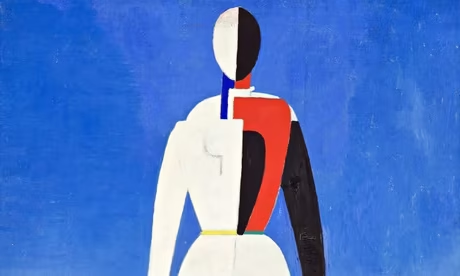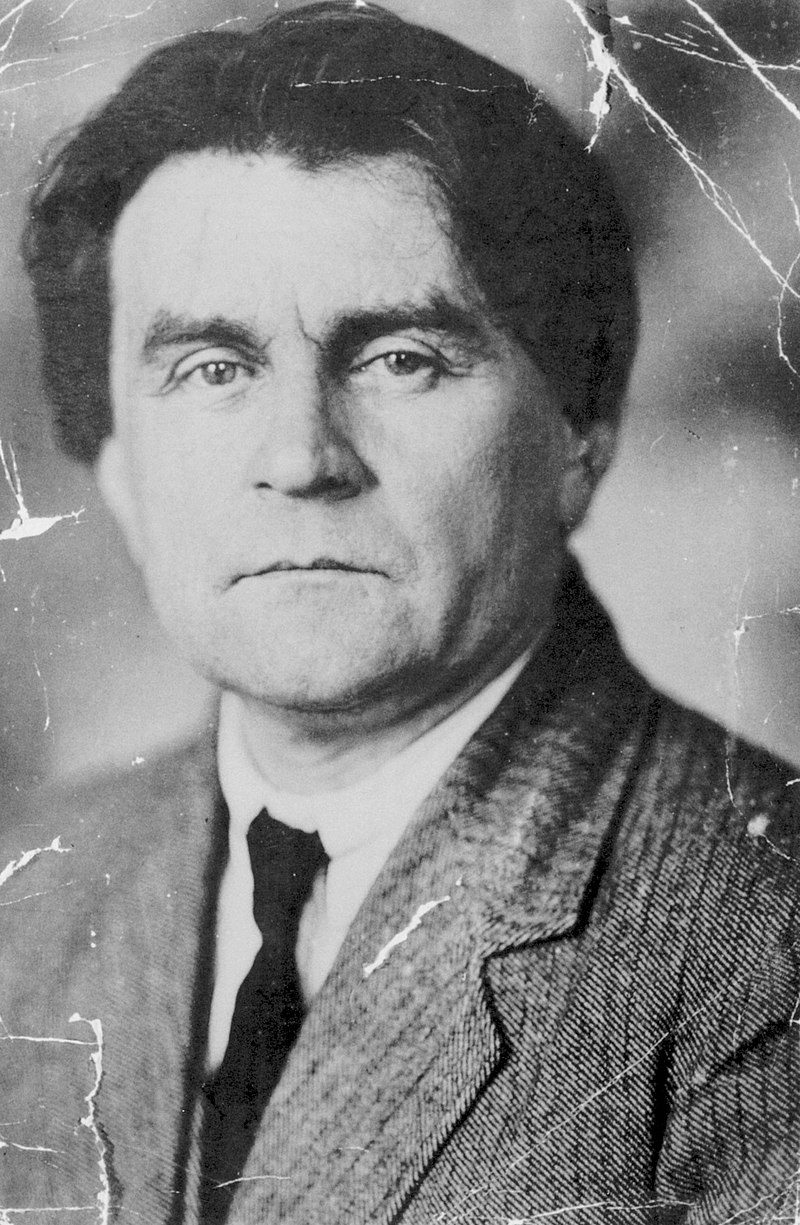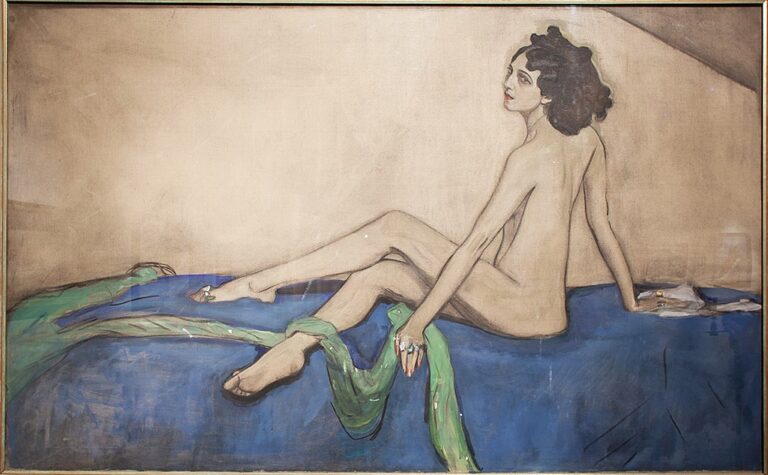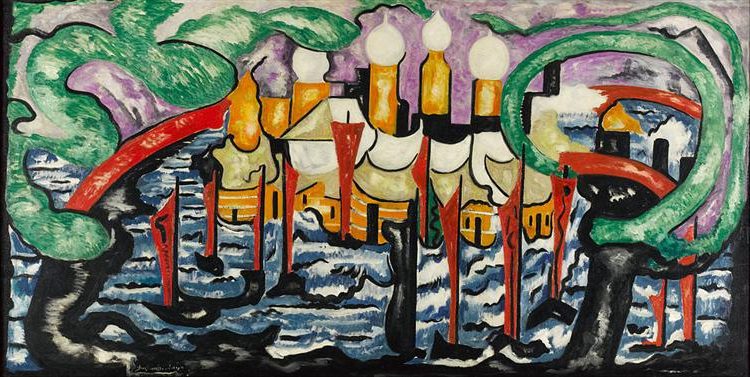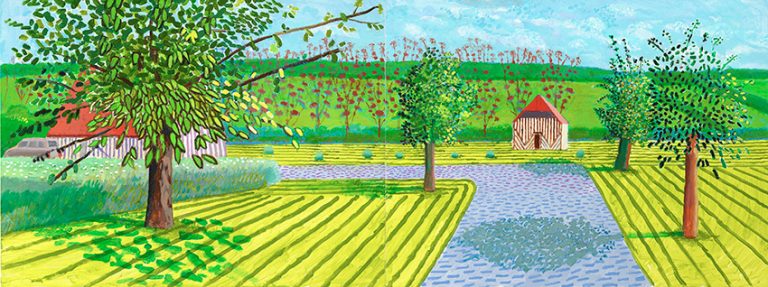Kazimir Malevich: Painter Who Revolutionized Abstract Art in the Early 20th Century
Born: 23 February 1879, Kyiv, Ukraine
Death: 15 May 1935, Saint Petersburg, Russia
Art Movement: Suprematism
Nationality: Russian
Influenced By: Paul Gauguin, Pablo Picasso, and Henri Matisse
Institution: Moscow School of Painting, Sculpture and Architecture
Kazimir Malevich: Painter Who Revolutionized Abstract Art in the Early 20th Century
Early Life and Career of Kazimir Malevich
Kazimir Severinovich Malevich was born on February 23, 1879, in Kyiv, Russian Empire (now Ukraine). His artistic journey began humbly but evolved through several important artistic movements before his revolutionary Suprematist work.
Transition to Suprematism
Malevich’s early artistic development showed remarkable range. He started with traditional Impressionist landscapes in the 1900s, then moved through Neo-primitivism, Cubo-Futurism, and Alogism. These early styles reflected his Russian heritage and growing interest in avant-garde ideas.
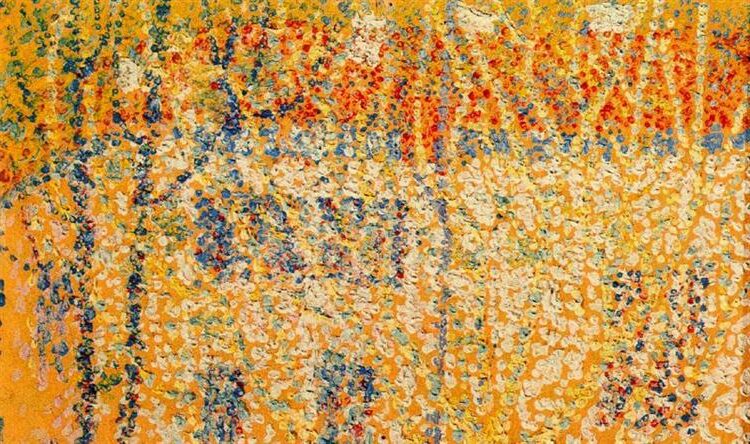
Landscape (1908) by Kazimir Malevich
By 1913, Malevich had begun working on the opera “Victory Over the Sun,” designing costumes and sets that featured geometric shapes. This project marked a turning point in his thinking about art.
The years 1914-1915 proved crucial for Malevich. He abandoned figurative art entirely and developed Suprematism—a radically abstract style using basic geometric forms and limited colors. His famous “Black Square” (1915) epitomized this approach with its stark black square on white background.
First Public Exhibitions
Malevich officially unveiled Suprematism at “The Last Futurist Exhibition of Paintings 0.10” in Petrograd in December 1915. His 39 abstract works shocked viewers with their complete departure from representational art. The iconic “Black Square” hung in the corner position traditionally reserved for religious icons in Russian homes.
The exhibition manifesto declared Suprematism as “the beginning of a new culture.” Despite mixed reactions from critics and fellow artists, Malevich gained supporters who recognized the significance of his artistic breakthrough.
In 1916-1917, Malevich exhibited with the Jack of Diamonds group in Moscow. He published his theoretical writings explaining Suprematism as art that expressed pure feeling, completely free from the objective world.
Through these early exhibitions, Malevich established himself as a revolutionary figure in Russian art and laid groundwork for many abstract art movements that followed.
Development of Suprematism
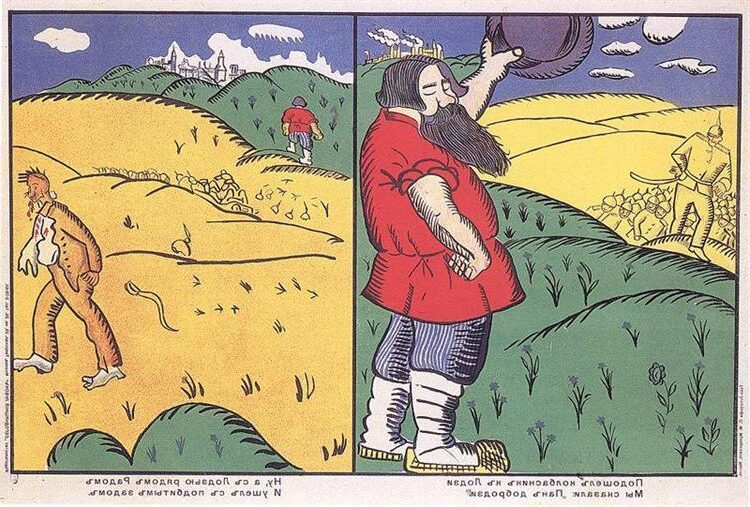
Sausage Maker Came to Lodz (Подошел колбасник к Лодзи), 1914
Kazimir Malevich developed Suprematism around 1913 as a groundbreaking form of abstract art focused on basic geometric shapes and a limited color palette. His revolutionary approach rejected representational art in favor of pure feeling expressed through simple forms.
Ideology Behind Suprematism
Malevich described Suprematism as “the supremacy of pure feeling or perception in the pictorial arts.” He believed art should move beyond depicting the visible world and instead express higher spiritual truths through abstraction.
Suprematism rejected the traditional approaches to art by stripping away all references to natural forms. Malevich viewed this as a new “realism” in painting, despite the absence of recognizable objects.
The movement emerged during a time of radical social change in Russia, with Malevich seeking to create an artistic language that matched the revolutionary spirit of the era. He wanted to free art from its obligation to represent reality and elevate it to a higher plane of existence.
Key Suprematist Works
Malevich’s “Black Square” (1915) stands as perhaps the most iconic Suprematist work. This simple black square on a white background represented the zero point of painting and the birth of a new artistic consciousness.

Black Square, 1915 by Kazimir Malevich
Suprematism evolved through three main phases: black, color, and white. The black phase introduced stark geometric shapes against white backgrounds. The colored phase incorporated limited but bold colors into geometric compositions.
“Suprematist Composition: White on White” (1918) marked the movement’s final phase, reducing the visual elements to a white square on a slightly different white background. This minimalist approach pushed abstraction to its logical conclusion.
Other significant works featured floating geometric forms—circles, squares, and lines—arranged to create a sense of infinite space and movement despite their simplicity.
Influence of Technology on Malevich’s Art
The rapid technological changes of the early 20th century significantly shaped Malevich’s artistic vision. Aviation and new perspectives from above inspired his floating compositions that seemed to defy gravity.
The machine age influenced his use of precise geometric forms. Circles, squares, and straight lines reflected the emerging industrial aesthetic while rejecting natural organic shapes.
Malevich embraced the revolutionary potential of technology. He saw modern advances as liberating humanity from earthly constraints, a theme he mirrored in his art through abstract forms floating in limitless white space.
Photography’s growing influence also pushed Malevich toward abstraction. As cameras could capture reality, he felt art needed to explore realms beyond what could be photographically documented.
Legacy and Impact in Modern Art
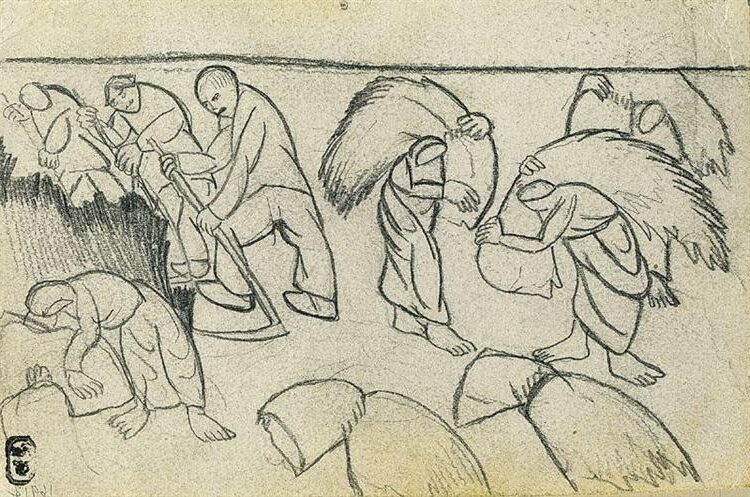
Reaping (Жатва), 1911 by Kazimir Malevich
Kazimir Malevich’s revolutionary approach to art continues to resonate throughout the modern art world. His Suprematist movement created ripples that extended far beyond his lifetime, influencing generations of artists and designers across multiple disciplines.
Posthumous Exhibitions and Recognitions
Malevich’s work gained significant international attention long after his death in 1935. In 1932, he participated in the “Artists of the RSFSR of the Past 15 Years” exhibition, which proved to be his last show during his lifetime.
The artist’s work remained largely hidden from public view during the Soviet era. A major breakthrough came when the Guggenheim Museum in New York hosted a comprehensive retrospective in 1973, introducing his radical vision to Western audiences.
Amsterdam’s Stedelijk Museum presented another landmark exhibition in 2013, bringing together works that had been scattered across collections worldwide. This show traveled to the Tate Modern in London and the Art Institute of Chicago, cementing Malevich’s place in art history.
Suprematism’s Influence on Contemporary Art
Malevich’s Suprematism, with its focus on pure geometric forms and non-representational reality, shaped numerous artistic movements. Minimalism and abstract expressionism owe clear debts to his pioneering work.

Veil (Плащаница), 1908 by Kazimir Malevich
His famous “Black Square” (1915) remains one of art history’s most radical statements, challenging conventional notions of what constitutes art. Contemporary artists like Anish Kapoor and Olafur Eliasson have built upon Malevich’s exploration of space, form, and perception.
Malevich’s influence extends beyond painting into architecture, design, and fashion. The Bauhaus movement incorporated many of his ideas about geometry and space. His catalog of works continues to inspire new generations of artists seeking to push boundaries.
Modern museums frequently display his works as foundational pieces in the evolution of abstract art, confirming his lasting impact on how we understand visual expression.
Frequently Asked Questions
Kazimir Malevich revolutionized modern art with his Suprematist movement, creating works that challenged traditional representation. His philosophical and artistic innovations continue to raise questions among art enthusiasts and scholars alike.
What are the defining characteristics of Kazimir Malevich’s Suprematist art movement?
Suprematism, founded by Malevich around 1913, focused on basic geometric forms and a limited color palette. The movement emphasized pure artistic feeling rather than visual depiction of objects.
At its core, Suprematism rejected the idea that art should represent visible reality. Instead, it celebrated the supremacy of pure artistic feeling and non-objective expression.
Malevich used simple forms like squares, circles, and crosses in bold colors against white backgrounds. These geometric compositions represented what he called “the zero of form,” a complete break from traditional representation.
How did Malevich’s works contribute to the development of abstract art?
Malevich pioneered non-objective art with his radical departure from representational imagery. He pushed abstraction to its logical extreme by reducing painting to its fundamental elements.
His work provided a philosophical foundation for abstract art by arguing that painting could exist independently of any reference to the visible world. This concept influenced generations of artists exploring pure abstraction.
Malevich’s ideas about form and meaning challenged conventional thinking about art’s purpose. His writings and theories helped legitimize abstract art as a serious intellectual pursuit rather than mere decoration.
Which notable paintings by Kazimir Malevich illustrate his Suprematist concepts?
“Black Square” (1915) stands as Malevich’s most iconic work, featuring a simple black square on a white background. This painting embodied his concept of “zero form” and marked a revolutionary moment in art history.
“Suprematist Composition: White on White” (1918) further reduced visual elements to a white square on a white background with subtle tonal differences. This work explored the minimal essence of painting itself.
“Supremus No. 58” (1916) showcases colorful geometric shapes floating in white space, demonstrating how Malevich used dynamic arrangements to create a sense of infinite space and movement.
How has Kazimir Malevich’s art influenced contemporary artists and movements?
Minimal and conceptual artists of the 1960s and 1970s drew directly from Malevich’s reduction of art to essential forms. His emphasis on geometric abstraction inspired artists like Donald Judd and Sol LeWitt.
Contemporary abstract painters continue to reference Malevich’s formal innovations and philosophical approach. His legacy appears in works that explore non-representational form and color relationships.
Malevich’s theories about art transcending material reality influenced digital artists creating virtual spaces. His concept of Suprematism as a new artistic reality resonates with artists working in new media and technology.
In what ways did political and social contexts impact Malevich’s artwork throughout his career?
The Russian Revolution initially provided Malevich with opportunities to develop his radical ideas. During the early Soviet period, he held teaching positions and continued to advance his Suprematist theories.
As Stalin’s regime solidified power, Malevich faced increasing pressure to adopt Socialist Realism. This political shift forced him to temporarily abandon his abstract work and return to more representational styles in the late 1920s.
Despite political challenges, Malevich maintained his philosophical convictions about art. He continued to sign his later figurative works with a small black square, secretly affirming his commitment to Suprematist principles.
What is the significance of the ‘Black Square’ painting in Kazimir Malevich’s oeuvre?
“Black Square” represented Malevich’s complete break with representational art. He called it “the zero of form,” signifying the end of traditional painting and the beginning of a new artistic language.
Malevich displayed the painting in the corner of a room during “The Last Futurist Exhibition” in 1915. He positioned it in the place traditionally reserved for religious icons in Russian homes. This placement suggested its spiritual significance.
The painting has acquired almost mythical status in art history. Art historians view it as a turning point that challenged fundamental assumptions about what art could be and opened new possibilities for abstract expression.

